
FARM to LAWN: Enhancing the Production, Establishment, and Marketability Success of Zoysiagrass Sod
What our project does
Our research team from three land-grant institutions aims to produce and provide access to a clear set of zoysiagrass sod production and lawn management guidelines. This project works toward improved, low-input cultivars that provide valued attributes to consumers.
This research is supported by the Agricultural Marketing Service, U.S. Department of Agriculture Multi-State Specialty Crops Block Grant, through the Texas Department of Agriculture, award number TX-SCM-21-01.
Bridging the knowledge gap: Adoption of economic and environmentally sustainable zoysiagrasses

Zoysiagrass is a warm-season perennial turfgrass known to produce high quality with lower inputs of water, nutrients, and pesticides as compared to other warm-season turfgrasses in the Southeast and Southwest. However, its use is not as widespread as some other turfgrasses due to slower establishment, poor extreme temperature tolerance, and susceptibility to certain biotic and abiotic stresses in commercially available cultivars.
Breeding efforts over the past decade have resulted in the development of interspecific hybrids with superior stress tolerance and appearance, which represent an important step in improving the environmental sustainability of managed turf. However, information is lacking on how to best grow-in and manage new hybrids (soon to become commercially available) at the FARM (sod producers) and LAWN (consumers including homeowners, installers, golf-course superintendents and sports field managers). This knowledge gap leaves producers and consumers to determine best management practices based on limited experiences and not research, likely creating hesitation in the adoption of economically and environmentally sustainable zoysiagrasses.
A four-pronged approach: Better practices for zoysiagrass production, markets, adoption
A project team of researchers from three land-grant institutions proposes to increase the adoption and use of zoysiagrass in four key ways. Successful completion of this project will significantly increase the productivity, sustainability, and economic gain of sod farms while also creating high-quality, sustainable lawns.
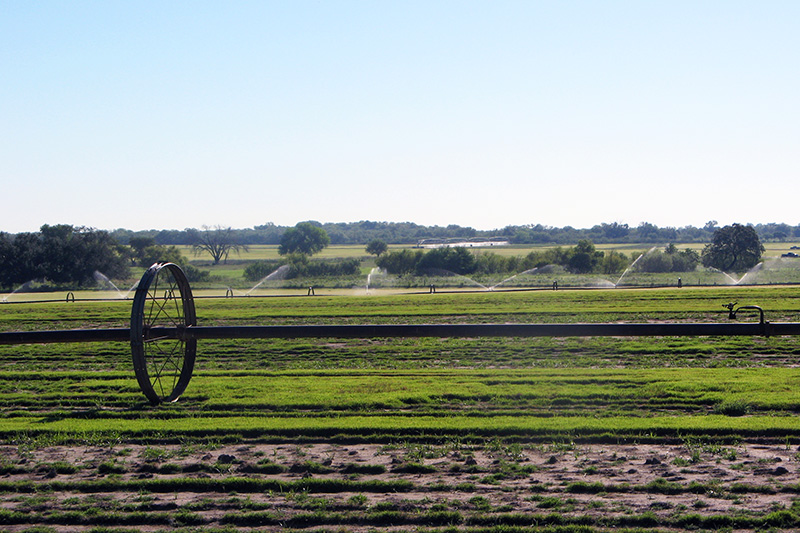
1. Optimize FARM production practices to increase revenue
Zoysiagrass is one of the most resource-efficient warm-season grasses because it requires less inputs. Increasing the production acreage and use of zoysiagrass will provide an economically and environmentally sustainable option for turfgrass producers (sod farms) and users (further defined under objective 3). However, sod farms have clearly identified a slower rate of establishment of zoysiagrass as a critical issue limiting production acreage and revenue generated from zoysiagrass sod production (Fig. 3). Furthermore, establishment rate on sod farms can potentially be hindered when controlling weeds by the use of some common herbicides that may cause injury or root inhibition or delay spring green-up from winter dormancy.
Turfgrass breeding programs have been working on developing new and improved cultivars of zoysiagrasses with a faster rate of establishment, wider range of adaptation (extreme temperature tolerance), and improved biotic and abiotic stress tolerance. Funding from the United States Golf Association (USGA) to a collaborative team of PD Chandra (Texas A&M), Co-PD Fry (KSU) and Patton (Purdue) over past 10 years has resulted in the development and identification of DALZ 1701, DALZ 1702 and DALZ 1808 with extreme temperature tolerance, improved drought resistance, and disease tolerance. Breeding programs at Texas A&M, NCSU, UFL, and UGA have also been working on developing new and improved zoysiagrass lines. However, information is currently lacking regarding their production cycle, re-growth after sod harvest, thatch production and its effect on sod harvestability and weed control measures during sod production. These project objectives are designed to provide answers to these questions prior to the commercial release of any of these lines. Knowledge gained from this research will enable the future producers of these new cultivars, regardless of their developer, to be better equipped to optimize and increase zoysiagrass production resulting in additional revenue for the farmer and increased performance and sustainability for the consumer.
Distinct outcomes: Objective 1
- Increase the production acreage of zoysiagrass as a sustainable and resource-efficient option for the transition zone.
- Increase farm revenue from shorter production cycles and faster growth/re-growth of recently released and soon-to-be-released, value-added, low-input cultivars.
- New knowledge on herbicide options to use during sod production of newly released and soon-to-be-released cultivars.
- Publication of an up-to-date peer-reviewed article as a benchmark of the current knowledge on zoysiagrass sod production.

2. Optimize LAWN management practices to ensure long-term success of established sod
Objective two addresses difficulties that have been noted with the performance of dense, fine-textured zoysiagrass cultivars, including Innovation and new genotypes, after sod is harvested at the FARM and laid on the LAWN. Thatch accumulation during production can occur and is often impacted by mowing height and nitrogen fertilization. Higher mowing heights and nitrogen levels during production encourage higher thatch production (Gaussoin et al., 2013). As detailed in the narrative, zoysiagrass roots can grow in thatch and may not penetrate soil effectively when sod is laid; as such, effective thatch management is critical. Issues with thatch in sod can impact aesthetics by minimizing rooting, causing greater levels of winterkill, and reducing drought resistance. A reduction in turf performance impacts turf producers and managers negatively and reduces the positive impacts of turf to the ecosystem. New zoysiagrass genotypes may respond differently to production management practices at the FARM and cultural practices after sod is laid. Specifically, mowing height on the LAWN site can impact quality and performance of new zoysiagrass genotypes. Experiments below will focus on the impact of mowing at standard lawn height and mowing at heights used on golf course fairways. Soil types at the FARM and LAWN will also be evaluated, as differences between the two can also impact root development after sod is laid.
Distinct outcomes: Objective 2
- New knowledge on managing standard zoysiagrass cultivars in comparison to new genotypes for rate of growth and thatch accumulation to help guide selection of new cultivars.
- Guidance to growers (FARM) on best management practices for production, with focus on mowing heights and nitrogen rates and their impact on thatch accumulation.
- Guidance to end-users (LAWNS) on impact of mowing height and soil type (at grower vs. end-user) on growth and quality of recently laid sod.
- Recommendations on cultural strategies for optimizing transplant success.

3. Understand market barriers to successful adoption of new cultivars
A main barrier to adopting low-input species is the lack of data on turf management post-transplant. Preliminary data from a needs assessment of residential, commercial, and athletic facilities users (LAWN) of zoysiagrass showed that their top two issues when managing their turf are slow recovery, and initial establishment. The same survey illustrated that end-users prioritize investing research dollars on faster establishment, tolerance to environmental stress and thatch management of zoysiagrass. The trends above demonstrate the need for research-based information that can assist the successful transplant and establishment of zoysiagrass in LAWNS. Yet, it is unknown the current cultural practices of commercial, residential, and athletic facilities regarding thatch management, mowing height, agrochemical use, and planting sites characteristics in LAWNS. It is also unknown the preferences of end-users towards zoysiagrass attributes, as well the most salient issues when managing turfgrasses in the Southern U.S.
Distinct outcomes: Objective 3
- Assess mowing requirements for a warm-season lawn.
- Quantify the required maintenance inputs (mowing, fertilizer, pesticides) for a quality low-input warm-season lawn.
- Assess consumer demand, preferences, and willingness to pay for low-input zoysiagrass cultivars.
- Investigate sod buyers’ preferences and rationale regarding warm-season low-input zoysiagrass cultivars.
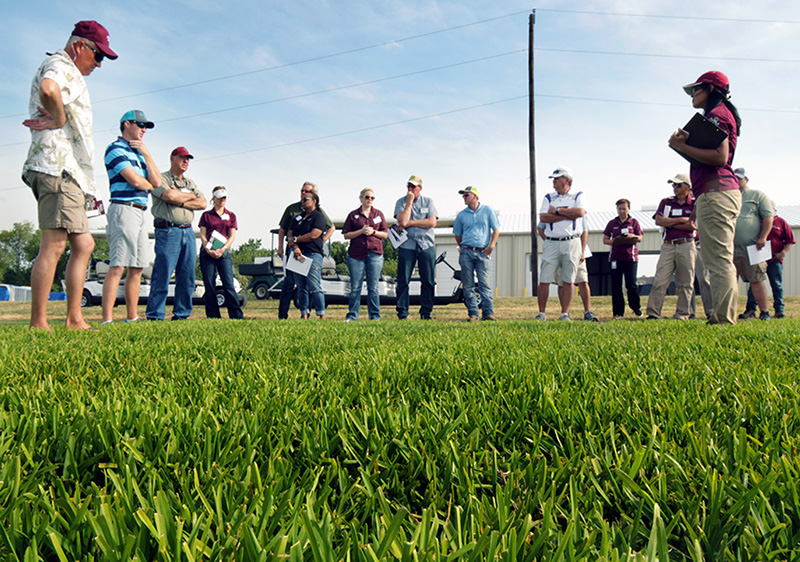
4. Offer research-based recommendations for the management of new zoysiagrass cultivars through educational outreach
There is a need to bridge the knowledge gap from research for best management practices of zoysiagrass for FARM (producers) to LAWN (end-users) through outreach education. Utilizing knowledge gained in the project through objectives 1, 2, and 3, we will create targeted extension outreach efforts. Objective four includes producing extension outreach products and programs to promote best management practices for producers and consumers of zoysiagrass; disseminating information through outreach education opportunities at the national, regional, and local levels;
Distinct outcomes: Objective 4
- Knowledge gained on producing and managing new zoysiagrasses able to improve sustainability.
- Adoption of best management practices for production and transplant success of zoysiagrass.
- Increased consumer awareness of new low-input technology (cultivars).
- Development of novel extension publications to aid sod producers and consumers.
Geographic target area
This project focuses on the southern U.S. climatic region, transition zone and area immediately north of the transition zone. This includes over 20 states spanning USDA plant hardiness zones 6a to 10b. Winter temperatures range from −10 to 40 °F.
The economic impact of the sod industry is estimated at $1.8B with 9 of the top 10 sod-producing states (by production value) within our target geography (Haydu et al., 2006).
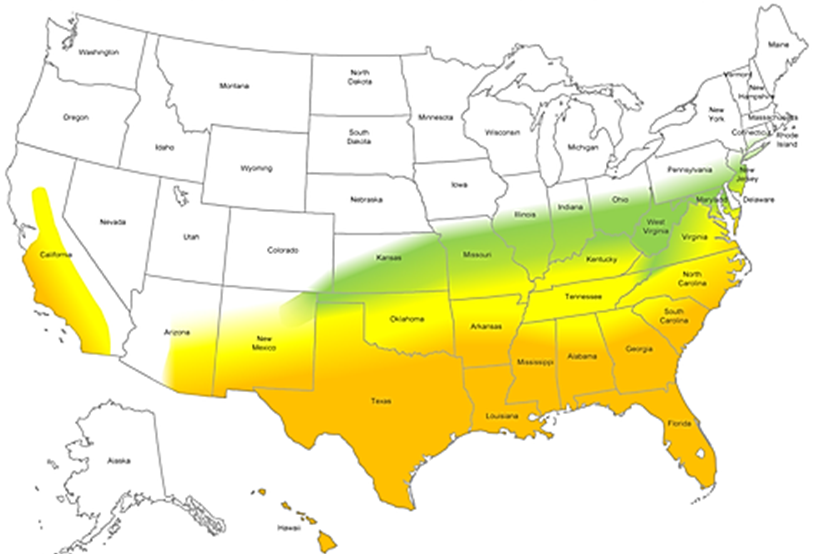
Project impact and benefit
At least 125 sod farms in the U.S. in 19 states are growing zoysiagrass with acreage expanding (Patton et al., 2017). This low-input grass carries more potential to gain even more market share with over 236,000 acres and 1,053 sod farms in the Southeast and South-Central U.S. alone (Haydu et al., 2006).
This research will impact new and existing zoysiagrass growers (FARMS) and consumers (LAWNS, including commercial and residential landscape companies and golf courses) in our targeted geographic area.
This will enable sod growers, who are licensees and sub-licensees of new and improved cultivars, as well as buyers (installers) and consumers (end-users) of these new cultivars, to take advantage of research-based information for stronger establishment and performance of new cultivars while reaping economic and environmental sustainability benefits.
FARM to LAWN Project Team
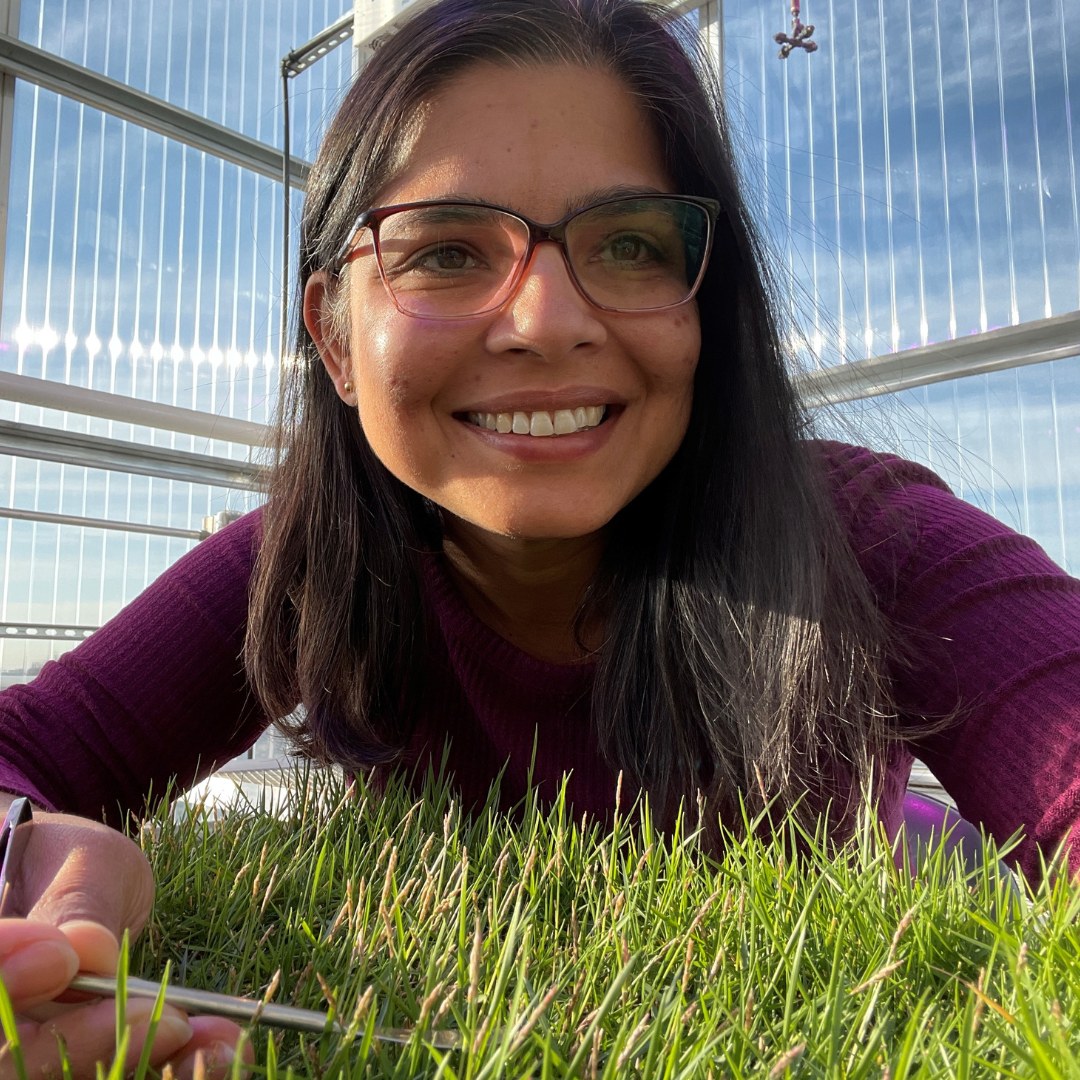
Ambika Chandra, Ph.D.
PD
Professor, Turfgrass Breeding, Texas A&M AgriLife Research, Texas A&M University Department of Soil and Crop Sciences

Jack Fry
Co-PD
Professor and Commercial Turf Extension Specialist, Department of Horticulture and Natural Resources, Kansas State University
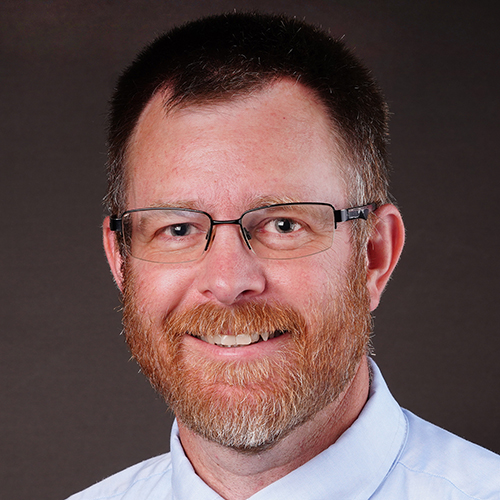
Aaron Patton
Co-PD
Professor and Turfgrass Extension Specialist Horticulture and Landscape Architecture, Purdue University

Ross Braun
Co-PD
Assistant Professor of Turfgrass and Landscape Management Director, Rocky Ford Turfgrass Research Center Horticulture and Natural Resources, Kansas State University

Ariana Torres
Co-PD
Associate Professor of Horticulture and Agricultural Economics, Horticulture and Landscape Architecture, and Agricultural Economics, Purdue University

Chase Martin
Project Coordinator
Masters Student
Texas A&M AgriLife

Dani McFadden
Ph.D. student
Kansas State University
Select Publications
2022, Crop Science, Development of winter hardy, fine-leaf zoysiagrass hybrids for the upper transition zone,
2022 | Crop Science
https://doi.org/10.1002/csc2.20834
Ross C. Braun, Aaron J. Patton, Ambika Chandra, Jack D. Fry, Anthony Dennis Genovesi, Meghyn Meeks, Megan M. Kennelly, Mingying Xiang, Manoj Chhetri, Michael D. Richardson, Douglas S. Richmond, Marta T. Pudzianowska, James H. Baird
Abstract
A 10-yr, four-phase collaborative effort among three universities was conducted to develop new hybrid zoysiagrasses (Zoysia spp. Willd.) with improved turf quality, winter hardiness, and pest resistance in comparison to commercial zoysiagrass cultivars, especially ‘Meyer’ (Z. japonica Steud.). In Phase 1, breeding efforts produced 2,858 new progeny that were evaluated for 2 yr across three sites. In Phase 2, only 60 (2%) of 2,858 progeny were selected for advancement to 10 replicated multiyear field trials (Phase 3). Phase 3 revealed 10 promising progeny (assigned DALZ numbers) that required further intensive field and laboratory testing in Phase 4. Phase 4 revealed differences in establishment rate, and DALZ 1701, 1702, 1707, and 1810 had moderate-to-good turf performance across seven sites, whereas DALZ 1808 had similar or slightly lower performance. Meyer consistently performed poorly, and ‘Innovation’, a recently released hybrid cultivar, had poor-to-moderate performance in comparison to the experimental genotypes, which illustrates the improvements achieved in zoysiagrass breeding in the last 10 yr. Freeze tolerance (LT50, lethal temperature killing 50% of the plants) ranged from −9.8 °C (Diamond) to −14.1 °C (DALZ 1812) with a mean of −12.5 °C. Evidence of large patch [Rhizoctonia solani Kühn, anastomosis Group (AG) 2-2 LP] in the top 10 DALZ genotypes was 15 to 40% lower than Meyer on several dates. Results indicate that there are multiple genotypes for potential release in the future with improved turf color, winter hardiness, freeze tolerance, large patch resistance, and finer leaf texture suitable for USDA plant hardiness zones ranging between 5b and 8a.
2017, Crop Science, Zoysiagrass (Zoysia spp.) History, Utilization, and Improvement in the United States: A Review
2017 | Crop Science
https://doi.org/10.2135/cropsci2017.02.0074
Aaron J. Patton, Brian M. Schwartz, Kevin E. Kenworthy
Abstract
Since its introduction into the United States in 1892, zoysiagrass (Zoysia spp. Willd.) has made a tremendous impact on the US turfgrass industry. Three species of zoysiagrass [Z. japonica Steud., Z. matrella (L.) Merr., and Z. pacifica (Goudswaard) M. Hotta & S. Kuroki] collected from East Asia and the Pacific Islands were introduced into the United States and are used directly as turf or by turfgrass breeders in the development of advanced lines. Golf courses, lawns, grounds, sod farms, athletic fields, roadsides, and airports are some of the many locations where zoysiagrass is used. While almost 50 improved cultivars of zoysiagrass have been developed to date, active efforts to improve zoysiagrass further and expand its utilization are ongoing. These continued improvements in stress and pest tolerance allow for expanded use of this low-input turf species. This review summarizes the history of zoysiagrass in the United States; summarizes species introduction and utilization; addresses and discusses strengths and shortcomings of the species; evaluates breeding history, methodology, and challenges; and suggests future prospects and potential for zoysiagrass.
Full publication available here.
2017, Journal of Plant Registrations, Registration of ‘KSUZ 0802’ Zoysiagrass
2017 | Journal of Plant Registrations
doi:10.3198/jpr2016.03.0010crc
A. Chandra, J. D. Fry, A. D. Genovesi, M. Meeks, M. C. Engelke, Q. Zhang, D. Okeyo, J. Q. Moss, E. Ervin, Xi Xiong, S. Milla-Lewis, J.T. Brosnan, J. Griffin, L. Parsons
Abstract
KSUZ 0802 (Reg. No. CV-282, PI 678793) is a fine-textured, cold-tolerant zoysiagrass (Zoysia spp.) hybrid co-developed and jointly released by Texas A&M AgriLife Research, Dallas, TX, and the Kansas Agricultural Experiment Station, Manhattan, KS. KSUZ 0802 is an F1 interspecific hybrid developed in 2001 from a cross between Zoysia matrella (L). Merr. ‘Cavalier’ and an ecotype of Z. japonica Steud. named Anderson 1, a derivative of ‘Chinese Common’. After years of testing (2004 –2008) for turf quality and winter survival at Manhattan, KS, KSUZ 0802 was advanced to a nine location test (2009 –2012) in the transition zone (Wichita and Manhattan, KS, Columbia, MO, Fletcher and Jackson Springs, NC, Stillwater, OK, Knoxville, TN, Virginia Beach and Blacksburg, VA, and Dallas, TX. The freezing tolerance, spring green-up, and fall color retention of KSUZ 0802 is equivalent to ‘Meyer’, but KSUZ 0802 has a finer leaf texture. KSUZ 0802 is also superior to Meyer for turf quality and resistance to bluegrass billbug damage. KSUZ 0802 is well suited for use on golf course fairways and tees, home lawns, and other recreational areas in the transition zone.
Full publication available at https://dl.sciencesocieties.org/publications/jpr/abstracts/0/0/jpr2016.03.0010crc?access=0&view=pdf
Follow us on X @zoysiaresearch
